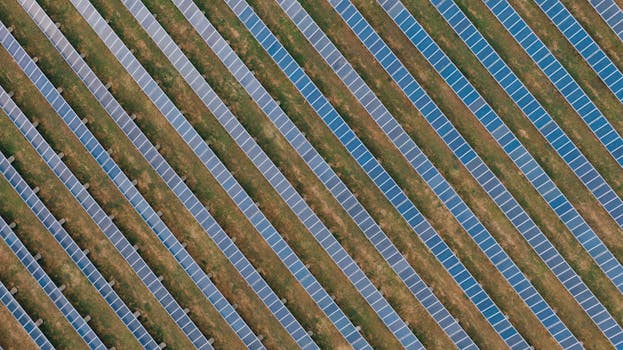“Empower Your Off-Grid Life: Mastering Solar Wiring for Remote Locations.”
Wiring a solar system for remote locations involves several key steps to ensure efficient energy generation and storage. This process is essential for providing reliable power in areas without access to traditional electrical grids. The introduction of solar technology has made it feasible to harness renewable energy in off-grid settings, allowing for sustainable living and reduced reliance on fossil fuels. Understanding the components, including solar panels, charge controllers, batteries, and inverters, is crucial for setting up a functional system. Proper planning and installation techniques will maximize energy output and ensure safety, making it possible to power everything from small appliances to entire homes in remote areas.
Choosing The Right Solar Panels For Remote Installations
When considering the installation of a solar system for remote locations, one of the most critical decisions revolves around choosing the right solar panels. The unique challenges posed by off-grid environments necessitate a careful evaluation of various factors to ensure optimal performance and longevity. First and foremost, it is essential to assess the energy needs of the location. Understanding the total wattage required for appliances and devices will guide the selection of solar panels that can adequately meet these demands.
In remote areas, where access to electricity is limited or non-existent, the efficiency of solar panels becomes paramount. High-efficiency panels, such as monocrystalline solar panels, are often recommended for these installations due to their superior performance in low-light conditions and their ability to generate more power per square foot. This is particularly advantageous in limited space scenarios, where maximizing energy output is crucial. Conversely, polycrystalline panels, while generally less expensive, may not provide the same level of efficiency, especially in less-than-ideal weather conditions. Therefore, evaluating the specific environmental conditions of the installation site, including sunlight exposure and potential shading from trees or buildings, is vital in making an informed choice.
Moreover, durability is a significant consideration when selecting solar panels for remote locations. These panels must withstand harsh weather conditions, including high winds, heavy snow, and extreme temperatures. It is advisable to look for panels that come with robust warranties, typically ranging from 25 to 30 years, as this indicates a manufacturer’s confidence in their product’s longevity. Additionally, panels with a higher rating for resistance to environmental factors, such as hail and corrosion, will ensure that the system remains operational over time, reducing the need for costly replacements or repairs.
Another important aspect to consider is the installation process itself. In remote locations, accessibility can be a challenge, which may influence the choice of solar panels. Lightweight panels can simplify the installation process, making it easier to transport and mount them in hard-to-reach areas. Furthermore, the compatibility of the solar panels with other system components, such as inverters and batteries, should not be overlooked. Ensuring that all components are compatible will facilitate a smoother installation and enhance the overall efficiency of the solar system.
In addition to these technical considerations, it is also wise to evaluate the cost-effectiveness of the solar panels. While high-efficiency panels may come with a higher upfront cost, their long-term energy production and durability can lead to significant savings over time. Therefore, conducting a cost-benefit analysis that takes into account both initial investment and potential energy savings is essential for making a sound financial decision.
Finally, it is beneficial to consult with professionals who specialize in solar energy systems for remote locations. Their expertise can provide valuable insights into the best practices for selecting and installing solar panels tailored to specific needs. By taking the time to thoroughly research and consider these factors, individuals can ensure that they choose the right solar panels for their remote installations, ultimately leading to a reliable and efficient energy solution that meets their off-grid power requirements. In conclusion, the right choice of solar panels is a foundational step in establishing a successful solar system in remote locations, paving the way for sustainable energy independence.
Essential Components For Wiring A Solar System

When considering the installation of a solar system for remote locations, understanding the essential components for wiring is crucial to ensure efficiency and reliability. At the heart of any solar setup are solar panels, which capture sunlight and convert it into electricity. These panels are typically connected in series or parallel configurations, depending on the desired voltage and current output. It is important to select panels that are compatible with each other to maximize energy production and maintain system integrity.
Once the solar panels are in place, the next critical component is the charge controller. This device regulates the voltage and current coming from the solar panels to the batteries, preventing overcharging and ensuring that the batteries are charged efficiently. There are two main types of charge controllers: PWM (Pulse Width Modulation) and MPPT (Maximum Power Point Tracking). While PWM controllers are generally less expensive and simpler, MPPT controllers are more efficient, especially in situations where the solar panel voltage is significantly higher than the battery voltage. Therefore, choosing the right charge controller is essential for optimizing the performance of the solar system.
Following the charge controller, the batteries serve as the energy storage system, allowing for the use of solar power even when sunlight is not available. When wiring a solar system, it is vital to select batteries that are designed for deep cycling, as they will be regularly charged and discharged. Lead-acid batteries, including flooded and sealed types, are common choices, but lithium-ion batteries are gaining popularity due to their longer lifespan and higher efficiency. Regardless of the type chosen, proper wiring and connections are necessary to ensure that the batteries are charged correctly and can deliver power when needed.
In addition to these primary components, an inverter is required to convert the direct current (DC) produced by the solar panels and stored in the batteries into alternating current (AC), which is used by most household appliances. When selecting an inverter, it is important to consider the total wattage of the devices that will be powered, as well as any potential surges in power demand. Inverters come in various sizes and types, including pure sine wave and modified sine wave, with pure sine wave inverters being the preferred choice for sensitive electronics.
Moreover, wiring and cabling play a significant role in the overall efficiency of the solar system. It is essential to use appropriately sized cables to minimize voltage drop, which can lead to energy loss. The distance between components also affects cable size; longer distances require thicker cables to maintain efficiency. Additionally, using high-quality connectors and ensuring all connections are secure will help prevent issues such as corrosion and overheating.
Finally, safety should never be overlooked when wiring a solar system. Incorporating fuses or circuit breakers can protect the system from overloads and short circuits. Grounding the system is also critical to prevent electrical shocks and ensure the safety of both the equipment and users. By carefully considering each of these essential components and their interconnections, one can create a reliable and efficient solar system tailored for remote locations. This thoughtful approach not only maximizes energy production but also enhances the longevity and safety of the entire solar setup, making it a sustainable solution for off-grid living.
Step-By-Step Guide To Wiring Solar Panels
Wiring a solar system for remote locations can seem daunting, but with a clear understanding of the components and a systematic approach, it becomes a manageable task. To begin, it is essential to gather all necessary materials, including solar panels, a charge controller, batteries, an inverter, and appropriate wiring. Each component plays a crucial role in ensuring the system operates efficiently and safely.
First, consider the layout of your solar panels. Position them in a location that receives maximum sunlight exposure throughout the day, ideally facing south in the northern hemisphere or north in the southern hemisphere. Once you have determined the optimal placement, securely mount the panels to prevent any movement due to wind or other environmental factors. After the panels are installed, the next step is to connect them in series or parallel, depending on your voltage requirements. Connecting in series increases the voltage, while connecting in parallel maintains the voltage but increases the current.
Once the panels are wired together, the next component to integrate is the charge controller. This device regulates the voltage and current coming from the solar panels to the batteries, preventing overcharging and ensuring the longevity of the battery bank. To connect the charge controller, run the positive and negative wires from the solar panels to the corresponding terminals on the controller. It is crucial to follow the manufacturer’s instructions for wiring to avoid any potential damage to the system.
After connecting the solar panels to the charge controller, the next step is to wire the batteries. Batteries store the energy generated by the solar panels, making it available for use when sunlight is not available. When wiring the batteries, ensure they are connected in a manner that matches your system’s voltage requirements. For instance, if you are using multiple batteries, you can connect them in series to increase the voltage or in parallel to increase the capacity. Always connect the positive terminal of one battery to the positive terminal of the next and do the same for the negative terminals.
With the batteries connected, the next phase involves wiring the inverter. The inverter converts the direct current (DC) stored in the batteries into alternating current (AC), which is used by most household appliances. To connect the inverter, run wires from the battery bank to the inverter’s input terminals, ensuring that the connections are secure and properly insulated. It is important to choose an inverter that matches your power needs, as this will ensure that it can handle the load of the devices you plan to use.
Finally, once all components are connected, it is essential to perform a thorough inspection of the entire system. Check all connections for tightness and ensure that there are no exposed wires that could lead to short circuits. After confirming that everything is in order, you can power on the system. Monitor the performance of the solar panels, charge controller, batteries, and inverter to ensure they are functioning correctly.
In conclusion, wiring a solar system for remote locations requires careful planning and execution. By following these steps and paying attention to detail, you can create a reliable and efficient solar power system that meets your energy needs, even in the most isolated areas. With the right setup, you can harness the power of the sun to provide sustainable energy for your remote location.
Troubleshooting Common Wiring Issues In Remote Solar Systems
When setting up a solar system in remote locations, it is essential to understand that wiring issues can arise, potentially disrupting the entire system’s functionality. Troubleshooting these common wiring problems is crucial for maintaining an efficient and reliable solar energy setup. One of the first issues that may present itself is poor connections. Loose or corroded connections can lead to voltage drops, which ultimately affect the performance of the solar panels and the overall system. To address this, it is advisable to regularly inspect all connections, ensuring they are tight and free from corrosion. Using appropriate connectors and sealing them with heat shrink tubing can also help protect against moisture and environmental factors that contribute to corrosion.
Another common issue is the use of inadequate wire gauge. In remote locations, where long distances between components are often necessary, using a wire gauge that is too small can result in significant voltage drop, reducing the efficiency of the system. To mitigate this, it is essential to calculate the appropriate wire gauge based on the distance and the current load. Utilizing a wire gauge calculator can provide guidance on selecting the right size, ensuring that the system operates optimally without unnecessary losses.
Furthermore, it is important to be aware of the potential for short circuits, which can occur if wires are improperly insulated or if they come into contact with conductive materials. This can lead to system failure or even fire hazards. To prevent short circuits, it is crucial to use high-quality, insulated wiring and to route wires carefully, avoiding sharp edges and potential pinch points. Additionally, employing circuit breakers or fuses can provide an extra layer of protection, allowing for safe disconnection in the event of a fault.
Grounding is another critical aspect of wiring a solar system, particularly in remote locations where lightning strikes can pose a significant risk. Proper grounding helps to protect the system from electrical surges and ensures safety for users. It is essential to follow local codes and regulations regarding grounding practices, which typically involve connecting the system to a grounding rod driven into the earth. Regularly checking the integrity of the grounding system can help prevent issues related to electrical surges.
Moreover, it is vital to consider the environmental conditions that can affect wiring in remote locations. Extreme temperatures, humidity, and exposure to UV rays can degrade wiring materials over time. Therefore, selecting weather-resistant and UV-stabilized cables is crucial for longevity. Additionally, using conduit or protective tubing can shield wires from physical damage and environmental factors, ensuring that the system remains functional over the long term.
Lastly, documentation plays a significant role in troubleshooting wiring issues. Keeping detailed records of the wiring layout, component specifications, and any modifications made to the system can be invaluable when diagnosing problems. This documentation allows for quicker identification of issues and facilitates effective communication with technicians or support services if professional assistance is needed.
In conclusion, troubleshooting common wiring issues in remote solar systems requires a proactive approach that encompasses regular inspections, proper material selection, and adherence to safety standards. By understanding these potential problems and implementing effective solutions, users can ensure that their solar systems operate efficiently and reliably, even in the most challenging environments.
Q&A
1. **Question:** What components are needed to wire a solar system for remote locations?
**Answer:** The essential components include solar panels, a charge controller, batteries, an inverter, wiring, and mounting hardware.
2. **Question:** How do you connect solar panels to the charge controller?
**Answer:** Connect the positive terminal of the solar panel to the positive input of the charge controller and the negative terminal to the negative input.
3. **Question:** What is the proper way to connect batteries in a solar system?
**Answer:** For a 12V system, connect batteries in parallel by linking positive terminals together and negative terminals together; for a higher voltage, connect in series by linking the positive terminal of one battery to the negative terminal of the next.
4. **Question:** How do you connect the inverter to the battery bank?
**Answer:** Connect the positive terminal of the inverter to the positive terminal of the battery bank and the negative terminal of the inverter to the negative terminal of the battery bank.
Conclusion
To wire a solar system for remote locations, ensure you select appropriate components such as solar panels, charge controllers, batteries, and inverters that match your energy needs. Begin by designing a layout that optimizes sunlight exposure and minimizes shading. Use high-quality, weather-resistant wiring and connectors to withstand environmental conditions. Properly size the wiring to handle the current load and minimize voltage drop. Implement safety measures, including fuses and circuit breakers, to protect the system. Finally, regularly maintain and monitor the system to ensure optimal performance and longevity. In conclusion, careful planning, quality materials, and regular maintenance are essential for successfully wiring a solar system in remote locations.




